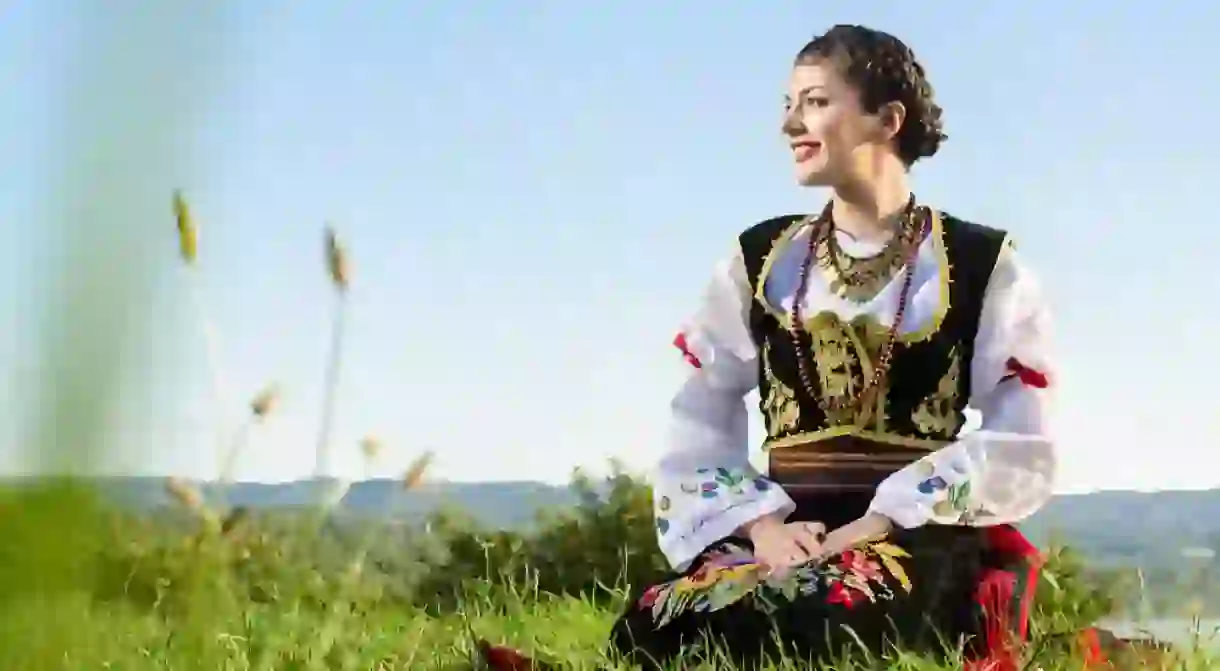Sumadija: A Guide to Serbia's Traditional Costume

While it has lost all ground to international fashion trends among the younger sections of society, traditional Serbian costume will find its way into national events and plenty of tourist attractions. But what exactly constitutes Serbian traditional dress, and what has the region of Šumadija got to do with it?
Different threads for different people
We’ll have to start off with something approaching a disclaimer, that may well render the entire subject superfluous. Serbian traditional dress was always different depending on what part of the nation you found yourself in, meaning there wasn’t one catch-all style across the Serbian lands. This is true for pretty much every nation on the planet, although it represents an uncomfortable truth for those looking to advertise uniformity.
Serbia spent much of the last millennium dealing with the meddling of larger neighbouring powers, and this influence can be seen in the various styles that were popular centuries ago. Little bits of Austrian, Hungarian, Italian and (especially) Turkish influence can be found, depending on which part of the country you are looking at.

The classics
With that pessimism in mind, let’s get into the various items that are fairly ubiquitous across the traditional Serbian clothing spectrum.
Šajkača
The style of clothing differs between males and females (obviously), but some form of headwear is omnipresent nonetheless. The most popular cap among males is arguably the šajkaca, an 18th century military cap that was originally worn by men in Belgrade tasked with defending the rivers from Ottoman onslaughts. It soon became popular among civilians, before becoming a part of official military uniform in the 19th century.
The cap has taken on a nationalist edge over the last three decades, and was the headwear of choice for marauding bands of Serbs committing atrocities across Bosnia in the 90s. Even so it remains an iconic piece of traditional Serbian clothing, and is often used in advertising campaigns aimed at the heart of the Serbian soul. It isn’t hard to find either, just look out for a hat with a clear ‘V’ shape on top.
Opanci
From the roots of the hair to the tips of the toes. Opanci are another important traditional part of Serbian clothing, and these laceless leather shoes have long been popular across the entire southeastern Europe region. They come in a variety of types, but a durability and a horn-like quirk to the toe are generally always seen. Shoes don’t come much more rural than this.
Colours
While the majority of colours on show in traditional Serbian dress veer towards the conservative, those new to the style may well be surprised at the amount of searing red that is also seen. The national colour was generally added to clothes wherever possible, a small sign of rebellion against whichever state was oppressing the Serbs at the time.

Why Šumadija?
The role of the central region of Šumadija in all of this is fairly simple. While there are many different quirks to the style throughout the country, it was the classical threads of those in Kragujevac, Jagodina and the rest that became accepted as the general norm. For the majority, ‘traditional Serbian clothing’ means ‘what they used to wear in Šumadija all those centuries ago’.

A fashion out of time
Traditional dress went out of fashion in Serbia a long time ago, however. Continental trends started making their presence felt in the nation in the 19th century, and the globalisation of the 20th and 21st has seen conservative rural attire consigned to gimmickry and the middle of nowhere. You simply won’t see anyone in Belgrade in traditional attire, unless you are in a museum or at some sort of national gathering.
International fashion trends aren’t the only reason for the decline of course. The clothes were always made by women, who were tasked with cultivating and processing the raw materials needed for four seasons attire. The women would stay at home and get to work, knitting, tailoring, sewing and decorating the threads before they were ready to be unveiled.
These skills were passed on from generation to generation, but the 20th century saw urbanisation come to the Balkans in a big way. Young people headed to the cities as opposed to staying behind in the villages and learning the traditions, so there was no one left to make the traditional clothes.
They certainly weren’t on sale in Belgrade and Novi Sad either, and the young people of Serbia now dress in no different way to the young people of France, Germany or the United Kingdom. You might see a little more neon and a little more skin here, so maybe a new tradition will make itself felt over the coming centuries.













